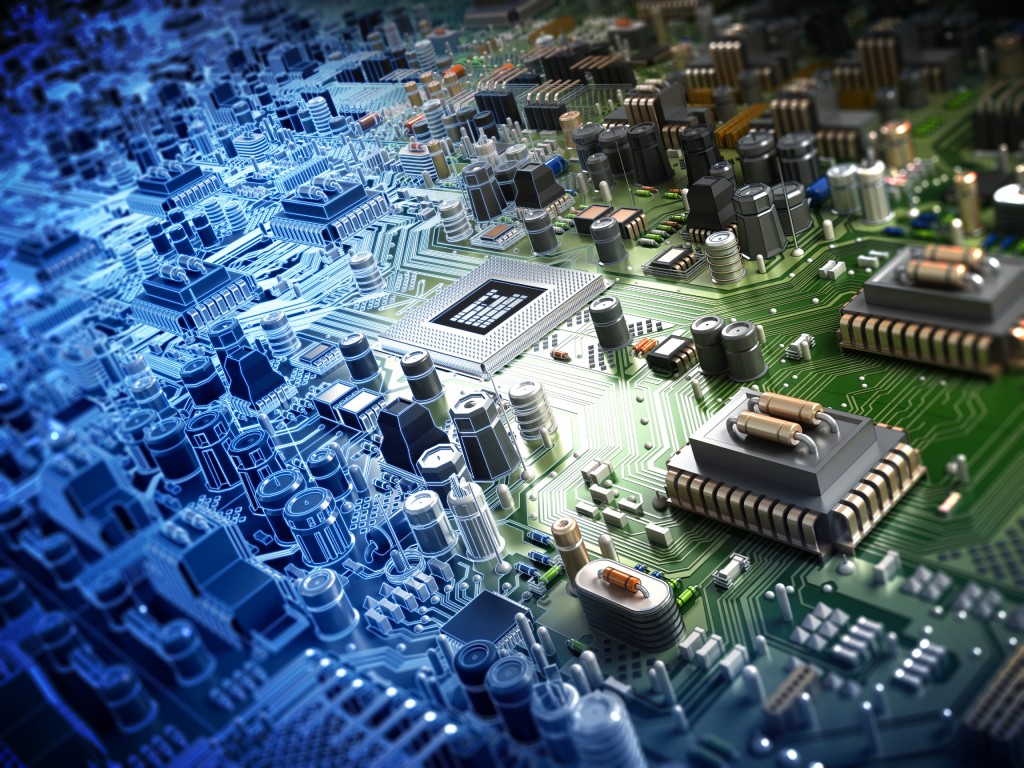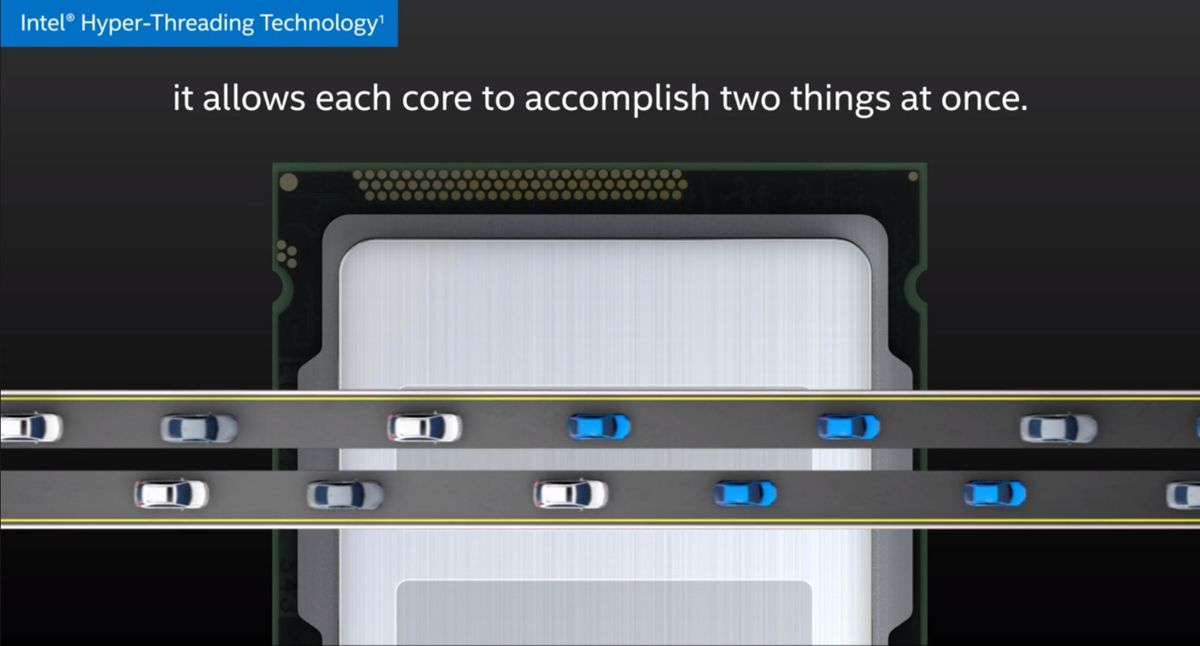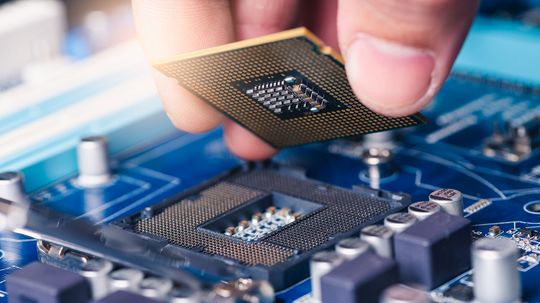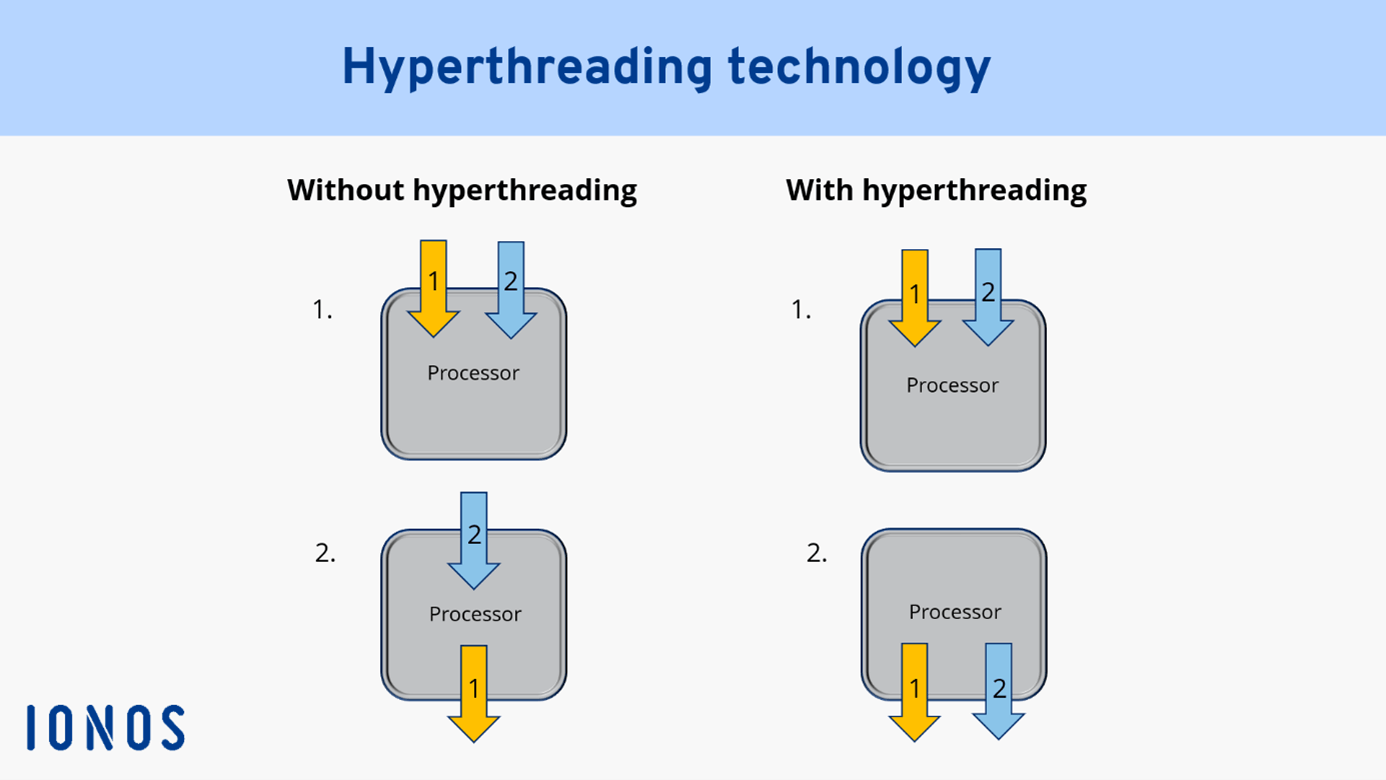Hyper-Threading Technology is the process by which a CPU divides up it's physical cores into virtual cores that are treated as if they are actually physical cores by the operating system. These were called as threads. Most of the INTEL's CPU with 2 cores use this process to create 4 threads or 4 virtual cores.
Hyper-Thinking is INTEL's term for what's also called simultaneous or SMT in the computer industry.If you want a faster computer but don't want to completely overhaul your hardware, Hyper-threading could be the answer to help you speed up your CPU.
In Hyper-Threading one core contains 1 or more thread and that thread again behave like logical CPU's. Because of it, several processes can run on different threads and improve the performance of the system.
ADVANTAGES:
* Multi-tasking
* Resource Utilization
* Responsiveness
Hyper-Threading works by allowing each core in your CPU to do actions at the same time. In turn, you get better processor performance since it's improving the CPU's efficiency. so you can use most demanding apps or games at the same time.
Your CPU is also known as the control center of your computer. It contains two important components. The control unit and the arithmetic logigal unit. The control unit uses electrical signals to direct the entire computer system to execute instructions.
The CPU executes instructions using the following steps
* The control unit gets the instruction from your computer’s memory.
* The control unit reads the instruction and derives the meaning, then directs the required data to be transferred from memory to the arithmetic/logic unit (ALU). These first two steps combined are referred to as the instruction time or I-time.
* The ALU carries out the arithmetic or logical instruction. This is when the ALU performs the actual operation on the data.
MULTI-THREADING VS HYPER-THREADING
APPLICATIONS
Hyper-Threading is applied to the operations and applications where multiple tasks are scheduled so that there will be no idle time on your processor, Video editing, 3D rendering and heavy multi-tasking are great examples of Hyper-Threading. This is a process where a CPU splits each of it's physical cores into virtual cores which are known as threads. For example most of the Intel's CPU with two cores use of hyper-threading to provide four threads and Intel's CPU with four cores use hyper-threading to provide eight threads.
ADVANTAGES:
The technology makes the best use of each CPU core. It addresses the issue of "starvation" that is common in multi-core processors.
Starvation is a condition in which a specific core remains idle and unutilized due to a lack of assigned signals, data, tasks, or instructions.
It allows the CPU to process more data in less time while also running more background data without interruption, making it ideal for multitasking.
Another benefit is that the CPU can switch resources between threads. For example, while running a video game in the foreground and several background tasks, the processor will not struggle.
Simultaneous multithreading enables the design and development of smaller chips by eliminating the need for more cores, increasing the potential number of transistors within a given area, and optimizing or overclocking processing frequencies.
It simply maximizes the efficiency of each core, allowing the core and the processor as a whole to reach their full performance potential.
Some software does not support multithreading at the same time. Under processor-intensive conditions, applications that do not support HT will not run smoothly. To take advantage of the technology, software implementation is required.
Another disadvantage of Hyper-Threading is that it causes the CPU to generate more heat.
Performance enhancements are primarily application-dependent. Furthermore, while Hyper-Threading can be disabled via the BIOS, the user cannot activate or deactivate it at any time. This feature, like Turbo Boost, is activated by the CPU under certain conditions.
Technically, the technology does not double the performance of a core or the entire CPU.
To avoid hardware performance degradation and overheating, a proper cooling system must be implemented.












No comments: